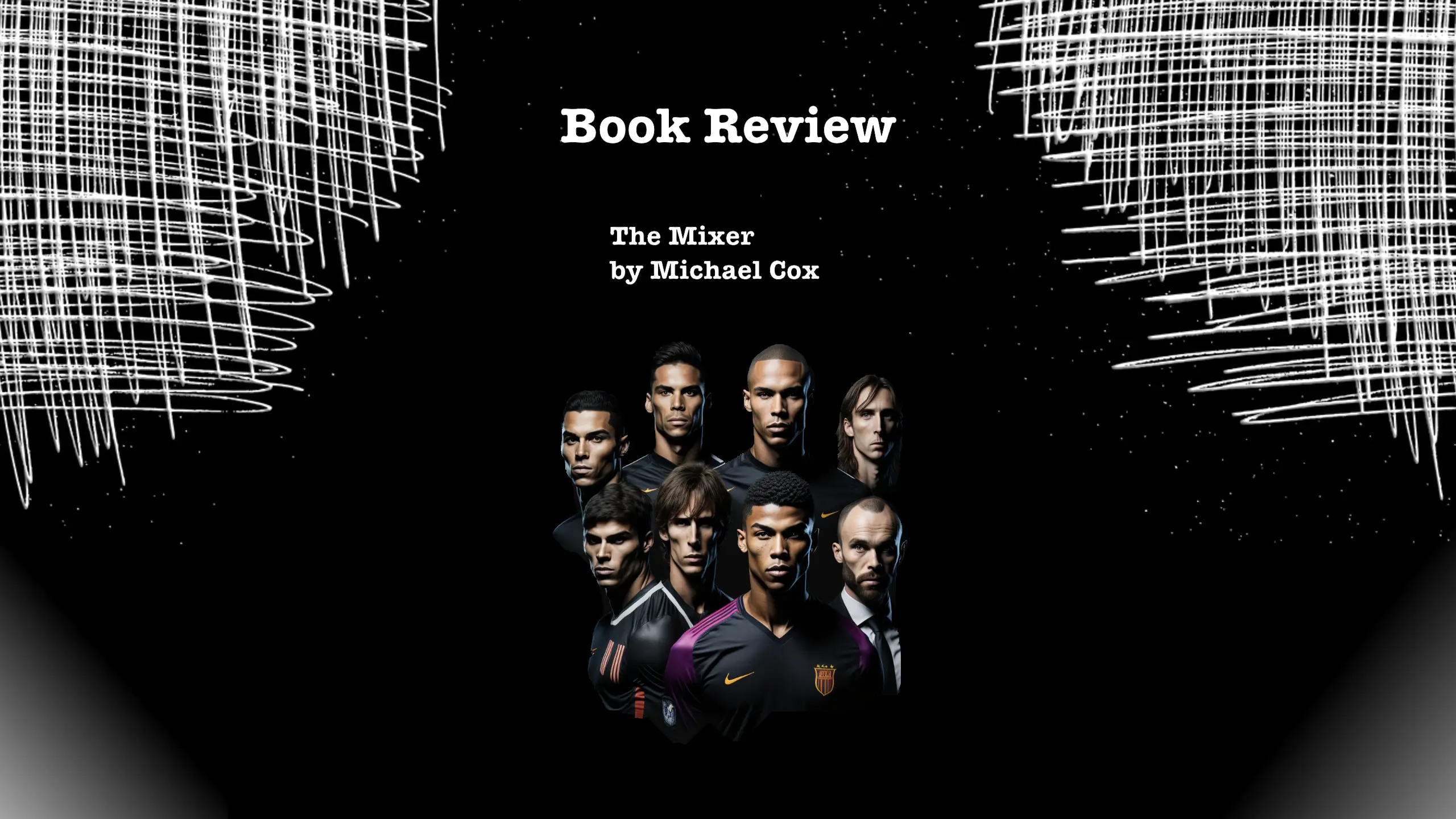Michael Cox’s The Mixer: The Story of Premier League Tactics from Route One to False Nines reads like a football encyclopedia — a comprehensive chronicle of the Premier League’s tactical evolution. Written from a journalistic perspective, it introduces readers to the key figures, ideas, and innovations that shaped the modern game.
Cox offers an engaging balance of storytelling and analysis, presenting football’s leading characters as architects of change rather than mere participants. While the tone is optimistic and celebratory, the book also acknowledges the personal and professional struggles of players and coaches. For readers, The Mixer serves as both an accessible entry point into football journalism and a foundational reference for exploring tactical concepts and historical development in greater depth.
Key Ideas
1. Tactical versatility and player adaptability
Sir Alex Ferguson revolutionized team composition by embracing positional versatility. His decision to move beyond the era of single-role specialists — with Ruud van Nistelrooy as the last pure central forward — set a precedent. After Robin van Persie’s departure, Ferguson’s teams featured players capable of performing multiple tactical roles, increasing fluidity and unpredictability.
2. Fulham and the rise of football analytics
Fulham became a pioneer in applying data analytics to football operations. Inspired by American sports systems, their coach established an analytical department, along with dedicated nutrition and fitness specialists — at a time when such roles were rare in English football. Critics mocked Fulham for having “more coaches than players,” but this structural innovation later became a norm across elite clubs.
3. The chessboard of Benítez and Mourinho
Neither Rafael Benítez nor José Mourinho had professional playing backgrounds, which led some to claim they were living their football dreams through coaching. Both favored systemic control over individual expression — their players functioned more as strategic pieces on a chessboard than as autonomous decision-makers.
(Fun fact: Benítez himself is an avid chess enthusiast.)
4. Scouting and complexity in modern football
The rise of global scouting networks transformed football into a strategic science. Clubs increasingly viewed recruitment as an analytical process — building theoretical models of player performance, fit, and tactical compatibility. This analytical revolution deepened the game’s complexity both on and off the pitch.
5. Stoke City and the “throw-in revolution”
Stoke City introduced one of the most unusual tactical innovations: treating throw-ins as set pieces, effectively using them like corner kicks. Their long-throw strategy became so dangerous that one opposing goalkeeper preferred conceding a corner rather than facing a Stoke throw-in. This approach popularized the very concept of “The Mixer” — the crowded zone in front of goal during set pieces, where chaos and opportunity coexist.
6. The concept of the Inverted Winger
Traditionally, wingers advanced along the touchline to cross into the box. The Inverted Winger, by contrast, cuts inside toward goal, creating diagonal passing and shooting opportunities. Players like Gareth Bale exemplified this evolution — transitioning from wide midfielder to inside dribbler and direct attacker, reshaping the tactical dynamics of wing play.
7. Brendan Rodgers and possession-based defense
Before his Premier League managerial debut, Brendan Rodgers spent weekends in Barcelona studying La Masia’s youth teams and learning Spanish. Influenced by their approach, he implemented possession as a defensive tool at Swansea City — emphasizing long spells of ball retention to neutralize opponents’ attacks. His Swansea side became a model for structured, controlled football outside traditional top-tier clubs.
8. Gegenpressing and the evolution of pressing
Cox clarifies the distinction between pressing and Gegenpressing (counter-pressing).
- Traditional pressing focuses on high pressure when the ball is in advanced areas.
- Gegenpressing begins immediately after losing possession, with the goal of regaining the ball before the opponent can organize.
Managers like Mauricio Pochettino and André Villas-Boas favored traditional pressing, using high defensive lines to limit passing options. In contrast, Gegenpressing — popularized by later managers such as Jürgen Klopp — added intensity and chaos, turning transition moments into opportunities.
Selected Citations from The Mixer
- “If you do zonal marking, the system gets the blame. If you do individual marking, the player gets the blame.”
- “More than anything, it felt like their shapes were more ‘Top-Down’ than ‘Bottom-Up,’ whereas Manchester United (under Ferguson) and Arsenal (under Wenger) were Bottom-Up.” — on Mourinho and Benítez.
Reference
Cox, M. (2017). The Mixer: The Story of Premier League Tactics from Route One to False Nines. London: HarperCollins.
External References
- UEFA Coefficient System by Country
- Next book to review: Soccernomics
